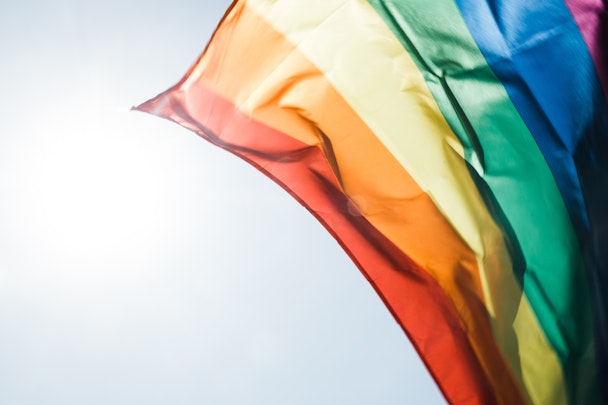LGBTQ+ community is young and brand saavy, but remains underserved by marketers
On the heels of Pride Month this past June, there is still a feeling among LGBTQ+ Americans they are at risk of losing hard-fought social and legal gains.

Photo by Unsplash/Peter Hershey
A new report from Kantar Futures, referencing the annual Human Right's Campaign buyer's guide, notes that positive portrayals of LGBTQ+ individuals can send a powerful message of inclusion to a group that is brand saavy and tend to be young, and are increasingly "hetero- sexual flexible" indicating an affinity with LGBTQ+ themes and lifestyles. The survey notes that brands can reach this community by both enforcing non-discrimination policies and procedures within companies, but also set similar expectations for vendors and business partners, including the marketing and advertising agencies who build up the brand.
The report cites Coca-Cola’s 'Pool Boy' spot as an example of a commercial that hits home with its classic tale of teen siblings, who in this case are racing to impress and flirt with the new “pool boy.” As so often happens in family life, Mom wins the day, but it is the portrayal of the easy acceptance within the family that hits a chord with the LGBTQ+ community.
According to Bloomberg, the LGBT segment boasted nearly $1tn in disposable spending power in 2016. That’s just a bit less than the spending power of the Hispanic and African-American segments, and a bit more than Asian-Americans’ spending.

Moreover, Bloomberg’s estimate accounts for a fairly traditional referencing of the community. Kantar Futures new methodology lets people—especially younger generations driving change within the culture—to describe themselves as they see themselves.
Although the traditional terms (straight, bi, and gay) are still in use, Kantar Futures coined the term “heterosexual-flexible” to describe individuals who are straight but relate to, support and respond to LGBT themes and lifestyle choices. By adding the Q+ cohort, as it is called in the study, the size and segment of the LGBTQ+ audience expanded. In 2015, 11% of the population identified as LGBTQ+, while just a year later the figure has risen to 15%.
“They’re experimental and experiential, desiring brands that offer them novelty and new experiences. They live in the moment and are more likely to value buying over budgets. And they’re highly brand oriented, more apt to use labels as markers of success and accomplishment,” said Rob Callender, associate head of the Polycultural Practice, Kantar Futures.
Brands and marketers owe it to themselves (and their growing LGBTQ+ consumer base) to understand the needs present in LGBTQ+ America—and what opportunities brands have to help answer them, Callender said.

